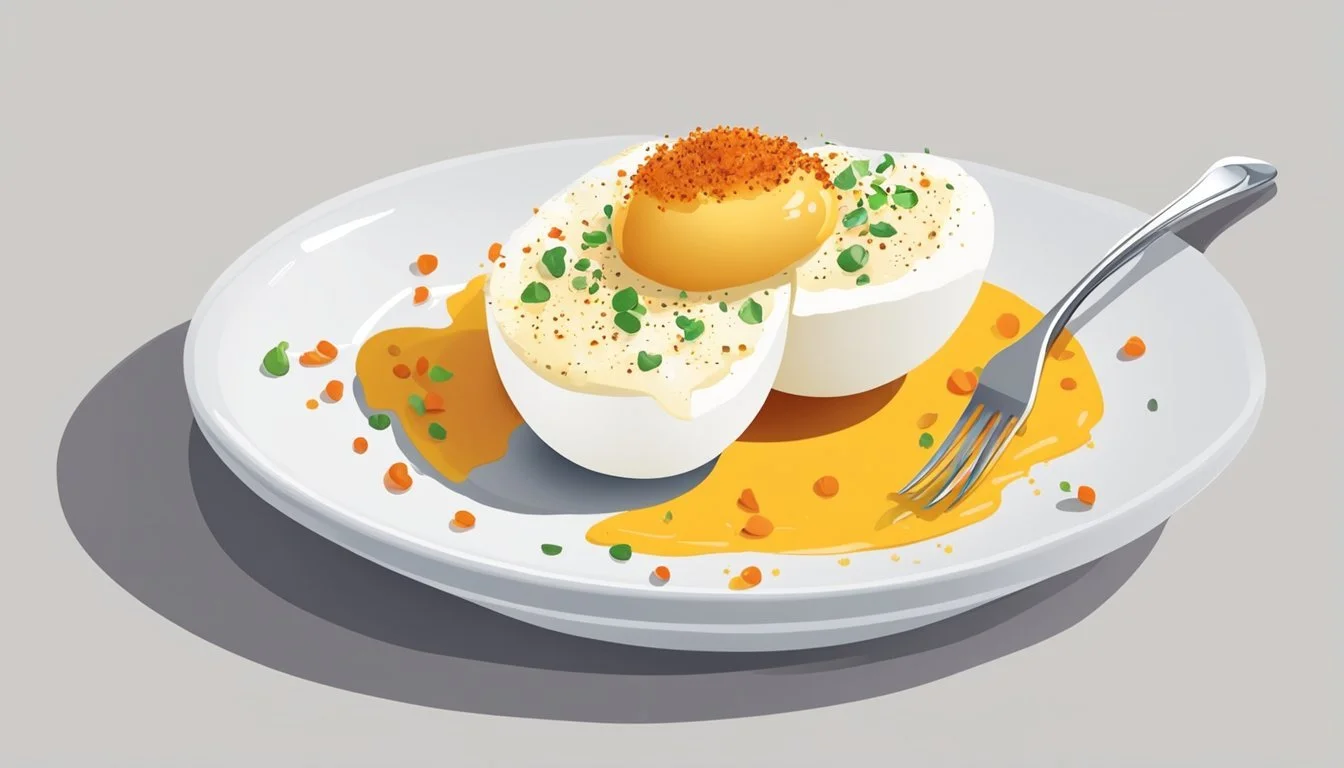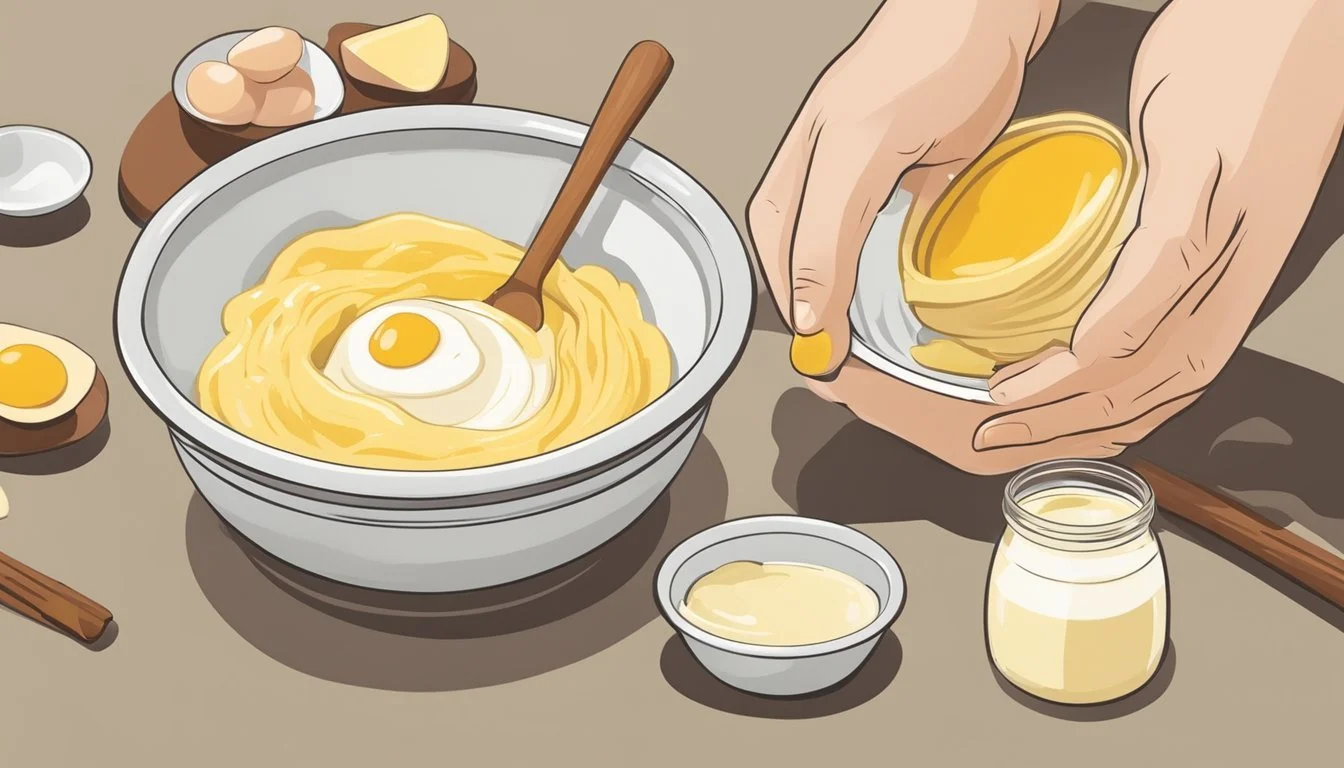How Do You Eat a Deviled Egg?
Mastering the Art of Enjoying This Classic Appetizer
Deviled eggs are a classic appetizer, loved for their creamy texture and rich flavor. By hard-boiling eggs and then halving them to remove the yolks, these yolks are then mixed with ingredients like mayonnaise, mustard, and spices to create a smooth, flavorful filling. This filling is spooned or piped back into the egg white cavities, resulting in a dish that is both visually appealing and delicious.
They are a versatile choice for gatherings and can easily be tailored to suit a wide range of taste preferences. Whether one enjoys them with a sprinkle of paprika, a hint of dill, or even a touch of relish, deviled eggs are a delight in two-bite form. They are often served chilled, making them an excellent option for picnics, potlucks, and parties.
Eating a deviled egg is straightforward; it’s typically done in one or two bites. The size of the egg half makes it a perfect finger food, although some might opt for a small fork or spoon if serving at a more formal event. It’s a dish best enjoyed fresh, often garnished with spices or herbs to enhance its presentation and taste.
History and Origin of Deviled Eggs
Deviled eggs are a culinary classic that stemmed from ancient traditions and evolved over centuries to become a favorite at gatherings, holidays like Easter, and family picnics. The appetizer's development reflects changes in ingredient availability and cuisine trends.
Cultural Significance
Deviled eggs, a term derived from the 18th-century phrase "to devil," which referred to spicy or zestful food, carries great cultural significance. Its roots can be traced back to Ancient Rome where boiled eggs seasoned with spicy sauces were a staple at the beginning of meals. The Roman's customary phrase "ab ova usque ad mala," means "from eggs to apples," indicating the course of a meal from start to finish. In modern times, deviled eggs hold a firm place in celebratory events and household culinary traditions, especially during the Easter season when eggs symbolize new life and rebirth.
Evolution of the Recipe
Over time, the deviled egg recipe transformed significantly. Ingredients once favored during certain periods, such as:
Medieval Times: Cheese, herbs, raisins, and flavored oils.
Modern Variations: Mayonnaise, mustard, and various toppings like paprika and chives (how long do chives last?).
These components led to the creation of what many recognize today as the classic deviled egg—a stuffed egg that's often present at picnics and holiday gatherings. The standard process involves:
Hard-boiling eggs and peeling them.
Slicing the eggs in half.
Removing the yolks and mixing them with a combination of other ingredients.
Refilling the egg whites with the mixture and serving.
This delicious evolution marks deviled eggs as a versatile and enduring recipe. The dish is typically served cold, contrasting with earlier versions which were sometimes served hot.
Selecting Ingredients
When creating deviled eggs, the choice of ingredients is paramount. One must choose high-quality eggs and fresh accompaniments to ensure the best flavor and texture.
Choosing the Best Eggs
Fresh eggs are essential for taste and the ease of peeling. Eggs a few days old are preferable as they are easier to peel once boiled. To test an egg's freshness, place it in a bowl of water; fresh eggs sink while older ones will float. When selecting eggs, aim for consistency in size to ensure uniform cooking and presentation.
Freshness of Additional Ingredients
The quality of additional ingredients dramatically affects the final taste of the deviled eggs.
Mayo should be creamy and not overpowering.
Fresh mustard provides tanginess, with Dijon being a popular choice for a balanced flavor.
Paprika, salt, and pepper are classic seasonings that should be fresh for the best aroma and taste.
Vinegar—often apple cider or white—adds a subtle sharpness, while a pinch of sugar can balance the flavors.
Pickle or relish can be incorporated for additional zest, though they should not dominate the yolk mixture.
Quality ingredients mixed properly will yield a delightful yolk filling and a memorable eating experience.
Cooking Techniques
Mastering the cooking techniques for deviled eggs ensures that the eggs are easy to peel and have a perfectly set, creamy yolk ideal for the filling.
Boiling the Perfect Egg
To boil eggs perfectly, consistency is key:
Consistent size: Use eggs of the same size to ensure even cooking.
Start in cold water: Place eggs in a pot and cover with cold water to about one inch over the tops of the eggs.
Boiling: Bring water to a boiling point and then reduce to a low boil for a duration that depends on the desired firmness; approximately 9-12 minutes for hard-boiled eggs.
Prevent overcooking: To avoid overcooking, which can lead to a green ring around the yolk, cool the eggs promptly after boiling.
Cooling and Peeling Methods
Post-boil cooling and peeling techniques:
Immediate cooling: Transfer the eggs to a cold water bath or an ice bath immediately after boiling. This action:
Stops the cooking process.
Helps prevent a grey-green color around the yolks caused by overcooking.
Peeling strategies: Once cooled, peel the eggs.
Older eggs: Older eggs often peel more easily than fresh eggs as the pH levels of the whites rise over time, creating more space between the egg white and the shell.
Rolling: Gently roll eggs on a countertop to crack the shell before peeling; starting at the wider end where there is natural space due to the air pocket can also assist in cleaner peeling.
Blanch method: For stubborn shells, place the egg back in warm water for a minute before peeling, which can help the shell come off more easily.
Preparing the Filling
The filling is the heart of a deviled egg, intricately mixed and seasoned for a rich, smooth consistency. The quality of the yolk mixture defines the flavor and texture of the final product.
Mixing and Seasoning the Yolk Mixture
To begin, cooks remove the yolks from hard-boiled eggs and mash them finely with a fork. It is crucial to achieve a lump-free consistency. A quintessential step is the addition of mayonnaise, which acts as a base for the filling, providing creaminess. Mustard is often added for tanginess, and seasoning is critical: salt and black pepper are staples, but additional spices like paprika, cayenne, or sriracha might be included for a kick. Consistent tasting and adjusting of the yolk mixture ensure a balanced flavor profile.
Basic yolk mixture:
Yolks
Mayonnaise (as needed for creaminess)
Mustard (1 teaspoon per 6 yolks typically)
Salt (to taste)
Black pepper (to taste)
Incorporating Additional Ingredients
For those keen on exploring beyond the traditional recipe, a variety of additional ingredients can elevate the filling. Chopped chives or dill can impart an herbaceous note, pickle relish adds a sweet and tangy dimension, and bacon (how long does bacon last?) introduces a smoky crunch. Some cooks might substitute mayonnaise with yogurt or avocado for a healthier twist or pimento cheese for added complexity. The key is to maintain a balance where the original yolk mixture remains the hero, complemented by these flavors.
Variations to consider:
Herbs: Chopped chives or dill
Crunch: Bacon bits or finely chopped pickles
Heat: A dash of cayenne or a squirt of sriracha
Creaminess: A dollop of Greek yogurt or mashed avocado
Extra flavor: Spoonful of pickle relish or pimento cheese
Assembly and Presentation
The process of assembling and presenting deviled eggs not only requires an eye for aesthetic detail but also skillful techniques to ensure each component, from the perfectly piped yolk mix to artfully placed garnishes, plays its part in creating an irresistible appetizer that's as delightful to look at as it is to eat.
Filling Techniques and Tips
Piping Bag Use: Using a piping bag equipped with a large tip, such as the Wilton #2110, can transform the egg yolk filling back into the egg whites with precision and elegance. To fill the piping bag, one folds over its top edge to form a cuff, spoon in the prepared egg yolk mix—ensuring no air pockets form—and then unfold and twist the bag to push the filling towards the tip. For a classic look, they can create smooth mounds or, for more flourish, pipe in rosettes or swirls.
Consistency of Filling: The egg yolk mixture must be creamy and smooth for easy piping. One achieves this consistency by thoroughly mixing the hard-boiled egg yolks with ingredients such as mayonnaise and mustard, and seasoning to taste. The texture should be firm enough to hold its shape when piped, yet soft enough to extrude effortlessly through the piping tip.
Garnishing for Visual Appeal
A well-garnished deviled egg is not only a feast for the palate but also the eyes. Common garnishes include a light sprinkle of smoked paprika for a touch of color and subtle smokiness. Tiny bits of crumbled bacon, sliced olives, or finely chopped scallions can be artfully placed on top for additional flavor complexity. They provide a contrasting texture and make for a visually appealing presentation on the serving platter.
When serving as a side dish or part of a larger menu, ensure that each deviled egg boasts uniformity in appearance. They should also complement other offerings, such as potato salad, to create a cohesive visual experience. The serving platter must be carefully chosen to accommodate the number of eggs and to showcase them in the most appealing manner; often, no deviled egg plate is necessary—a simple, elegant platter will suffice.
Serving and Storage
Deviled eggs are a popular choice for gatherings, offering a balance of protein, fat, and flavor. Proper storage and preparation can ensure they remain fresh and safe for consumption.
Optimal Temperature and Storage
Deviled eggs should be kept in the refrigerator both before serving and after if there are leftovers. The ideal temperature range for storing these appetizers (What wine goes well with appetizers?) is between 35°F and 40°F (2°C and 4°C) to minimize the risk of bacterial growth. They should be stored in an airtight container to maintain freshness. When displaying deviled eggs on a serving platter, they can sit out at room temperature for up to 2 hours.
Advance Preparation Tips
To prevent deviled eggs from drying out, one can refrigerate the scooped-out egg whites and the yolk filling separately, then fill them shortly before serving. For those preparing in advance, covering the egg whites with plastic wrap or placing them in an airtight container will help. The yolk mixture can also be stored separately in the refrigerator, which makes for easier assembly and fresher taste upon serving.
Health and Nutrition
Deviled eggs, a popular hors d'oeuvre, consist of boiled egg whites filled with a creamy mixture of yolks, mayonnaise, and often mustard and spices. Nutritional content varies based on ingredients used, but here is an analysis of the traditional recipe's health components.
Nutritional Content of Deviled Eggs
Protein: A significant component of deviled eggs, protein is vital for body repair and muscle growth. On average, each half of a deviled egg contains about 3 grams of protein.
Calories: One half of a standard deviled egg may contain approximately 60-70 calories, with variations depending on the filling's richness.
Fat: The yolk is a source of fats, with a single deviled egg half typically containing around 5 grams of fat, mainly from the yolk and mayonnaise.
Sodium: Deviled eggs can have a high sodium content, especially if extra salt is added or if the mayonnaise used is high in sodium. It's crucial to moderate sodium intake for blood pressure management.
Potassium: Eggs contain potassium, which supports proper heart function and muscle contractions.
Fiber: Traditional deviled eggs contain minimal fiber; however, additions like celery or onion can increase the fiber content slightly.
Calcium: Present mainly in the egg yolk, calcium supports bone health. Mayonnaise adds a small amount of calcium as well.
Iron: Eggs are a source of iron, necessary for oxygen transport in the blood. One deviled egg half can contribute to the daily iron intake.
Vitamins: Eggs provide Vitamin C and other vitamins, although Vitamin C content may decrease with cooking. Utilizing ingredients like Greek yogurt can introduce probiotics and alter the nutritional profile favorably.
Dietary Considerations
Fat Content: For a healthier alternative, one could substitute mayonnaise with Greek yogurt or light sour cream to reduce the fat content and incorporate probiotics.
Spices: The use of spices like paprika can boost flavor without contributing additional calories or sodium.
Low-Calorie Alternatives: The addition of low-calorie fillers such as finely chopped vegetables can enhance nutritional value while keeping calorie count in check.
Deviled eggs can fit into a balanced diet when consumed in moderation and with attention to the composition of the filling. Using healthier alternatives for traditional ingredients can contribute to the overall nutritional benefit of this dish.
Variations and Alternatives
Exploring the vast array of deviled egg variations provides a window into regional and cultural preferences, as well as adaptable options for those with dietary restrictions or alternative ingredient choices. These adaptations can significantly alter the flavor profile and texture to suit different palates.
Regional and Cultural Variations
Deviled Eggs Carbonara: An Italian twist, incorporating crispy pancetta, rich pork fat, Parmesan crisps, and a crackling of black pepper. Deviled Eggs with Smoked Salmon: Offers a nod to Scandinavian flavors with the inclusion of smoked salmon and perhaps a sprinkle of dill. Banh Mi Deviled Eggs: Reflecting Vietnamese influence, these deviled eggs include vibrant elements like fresh mint, cilantro, carrots, cucumbers, and onions.
Dietary and Ingredient Substitutions
Egg Yolk Mixture Variations:
Mayo Alternatives: Substituting mayo with yogurt can lighten the filling.
Avocado: For a creamy texture with a twist, some recipes use avocado blended with egg yolks.
Flavor Add-ins:
Mustard: Dijon or yellow mustard are commonly used; however, those seeking a tangier zest may opt for sweet pickle mustard.
Spices: Smoked paprika, cayenne, or sriracha can add warmth and depth.
Fresh Herbs: Ingredients like dill or parsley infuse freshness.
Toppings:
Pickles and Kimchi: To incorporate a punchy zing, pickles or kimchi can be finely chopped as a garnish.
Blue Cheese: For a bold, savory topping, blue cheese can be crumbled over the eggs.
Making Deviled Eggs: A sharp knife ensures clean cuts of the egg whites, maintaining a neat appearance for stuffing.
Technical Tips and Tricks
When preparing deviled eggs, certain technical considerations can improve both the process and the final product. The right equipment and some clever techniques are crucial for achieving perfection in this classic dish.
Cookware and Equipment
For cooking eggs, a pressure cooker or an Instant Pot can be exceptionally efficient as it often provides a more predictable result and makes the peeling process smoother. When choosing cookware, one should ensure it's the right size to accommodate all the eggs without crowding them.
Pressure Cooker/Instant Pot: Cooks eggs evenly, which can help prevent overcooking.
Sharp Knife: Ensures clean cuts when halving eggs.
Food Processor: Can create a fine, smooth filling when combined with the right ingredients.
Cooking Eggs:
Method Equipment Water Level Cook Time Pressure Cook Pressure Cooker/Instant Pot 1 cup (for pot) 5 minutes (high pressure), 5 minutes (natural release), 5 minutes (ice bath) Boil Method Pot 1 inch above eggs Bring to boil, then 30 seconds boiling, let sit 12-15 minutes covered
Tricks for a Perfect Deviled Egg
An essential step is correctly peeling the eggs. Cracking the wider end of the egg first can make peeling more manageable due to the air pocket located there. Plunging hard-boiled eggs into an ice bath right after cooking will make the shell easier to remove.
For the filling:
Prevent Overcooking: Overcooked yolks are dry and lead to a crumbly, less creamy filling.
Filling Texture: For an ultra-smooth filling, pass yolk through a fine sieve or use a food processor.
Filling Ingredients: Additions such as mayonnaise are a given, but incorporating a touch of vinegar or mustard can elevate the flavor.
Preparing Filling:
Step Tool Tip Separating Spoon/Food Processor Use it to remove yolks gently; blend yolks for smoothness. Mixing Food Processor/Hand Mixer Combine yolks with other ingredients until creamy. Distributing Piping Bag Cut the corner for easy filling; a star tip adds elegance.
In essence, one's attention to detail regarding cookware choices and preparation techniques can significantly influence the quality of one's deviled eggs.
Deviled Egg Recipes
Deviled eggs offer a canvas for a variety of flavors, from the traditional to the boldly creative. They typically consist of boiled egg whites filled with a spiced mixture of egg yolks and other ingredients.
Classic Deviled Egg Recipe
The Classic Deviled Egg Recipe serves as the foundation for all variations. For a traditional filling:
6 hard-boiled eggs, peeled and halved lengthwise
Egg yolks mashed in a bowl
2 tablespoons of mayonnaise
1 teaspoon of mustard
Salt and pepper to taste
Garnishes often include a sprinkle of paprika or a small addition of chives for both flavor and presentation. To assemble, one should pipe or spoon the yolk mixture back into the egg white halves and sprinkle with the preferred garnishes.
Innovative Deviled Egg Recipes
Seeking to update the classic, Innovative Deviled Egg Recipes incorporate a multitude of flavors. Some popular variations include:
Sriracha Deviled Eggs: Add a squirt of sriracha sauce to the yolk mixture for a fiery twist.
Bacon and Chive Deviled Eggs: Crumbled bacon and chopped chives offer a savory punch.
Greek Yogurt Deviled Eggs: Substitute mayonnaise with Greek yogurt, adding dijon mustard for a tangy, lighter filling.
Smoked Salmon Deviled Eggs: Top the eggs with pieces of smoked salmon and a dab of cream cheese for an upscale version.
Pimento Cheese Deviled Eggs: Mix pimento cheese into the yolk mixture for a Southern-inspired treat.
The flexibility of deviled eggs encourages experimentation with ingredients such as kimchi, blue cheese, and sweet pickle to suit any palate. To ensure the best results, one should consider balancing flavors and textures while also paying attention to the presentation.









